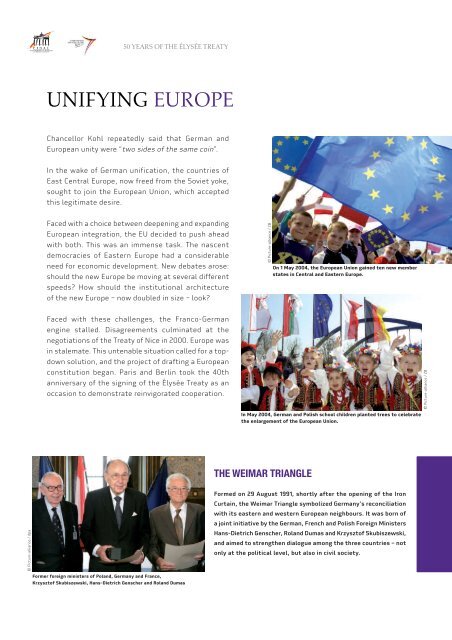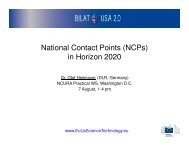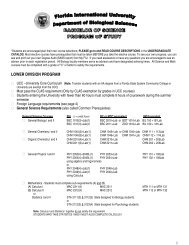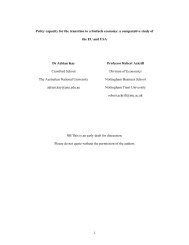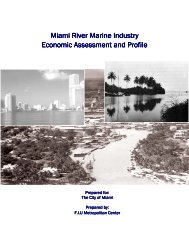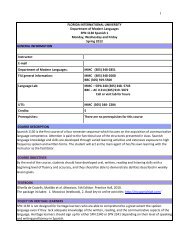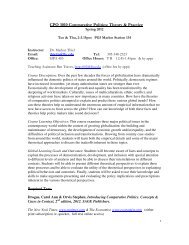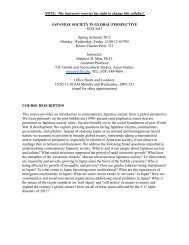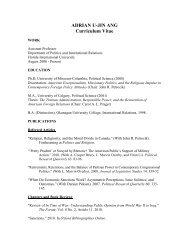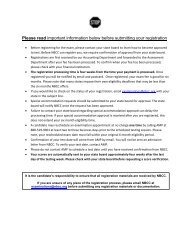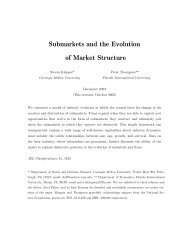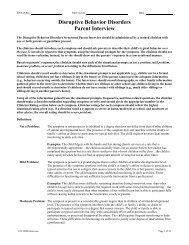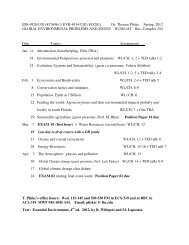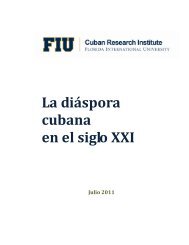GERMANY AS A
GERMANY AS A
GERMANY AS A
You also want an ePaper? Increase the reach of your titles
YUMPU automatically turns print PDFs into web optimized ePapers that Google loves.
© Picture-alliance / dpa<br />
50 YEARS OF THE ÉLYSÉE TREATY<br />
UNIFYING EUROPE<br />
Chancellor Kohl repeatedly said that German and<br />
European unity were “two sides of the same coin”.<br />
In the wake of German unification, the countries of<br />
East Central Europe, now freed from the Soviet yoke,<br />
sought to join the European Union, which accepted<br />
this legitimate desire.<br />
Faced with a choice between deepening and expanding<br />
European integration, the EU decided to push ahead<br />
with both. This was an immense task. The nascent<br />
democracies of Eastern Europe had a considerable<br />
need for economic development. New debates arose:<br />
should the new Europe be moving at several different<br />
speeds? How should the institutional architecture<br />
of the new Europe – now doubled in size – look?<br />
Faced with these challenges, the Franco-German<br />
engine stalled. Disagreements culminated at the<br />
negotiations of the Treaty of Nice in 2000. Europe was<br />
in stalemate. This untenable situation called for a topdown<br />
solution, and the project of drafting a European<br />
constitution began. Paris and Berlin took the 40th<br />
anniversary of the signing of the Élysée Treaty as an<br />
occasion to demonstrate reinvigorated cooperation.<br />
Former foreign ministers of Poland, Germany and France,<br />
Krzysztof Skubiszewski, Hans-Dietrich Genscher and Roland Dumas<br />
© Picture-alliance / ZB<br />
THE WEIMAR TRIANGLE<br />
On 1 May 2004, the European Union gained ten new member<br />
states in Central and Eastern Europe.<br />
In May 2004, German and Polish school children planted trees to celebrate<br />
the enlargement of the European Union.<br />
Formed on 29 August 1991, shortly after the opening of the Iron<br />
Curtain, the Weimar Triangle symbolized Germany’s reconciliation<br />
with its eastern and western European neighbours. It was born of<br />
a joint initiative by the German, French and Polish Foreign Ministers<br />
Hans-Dietrich Genscher, Roland Dumas and Krzysztof Skubiszewski,<br />
and aimed to strengthen dialogue among the three countries – not<br />
only at the political level, but also in civil society.<br />
© Picture-alliance / ZB


